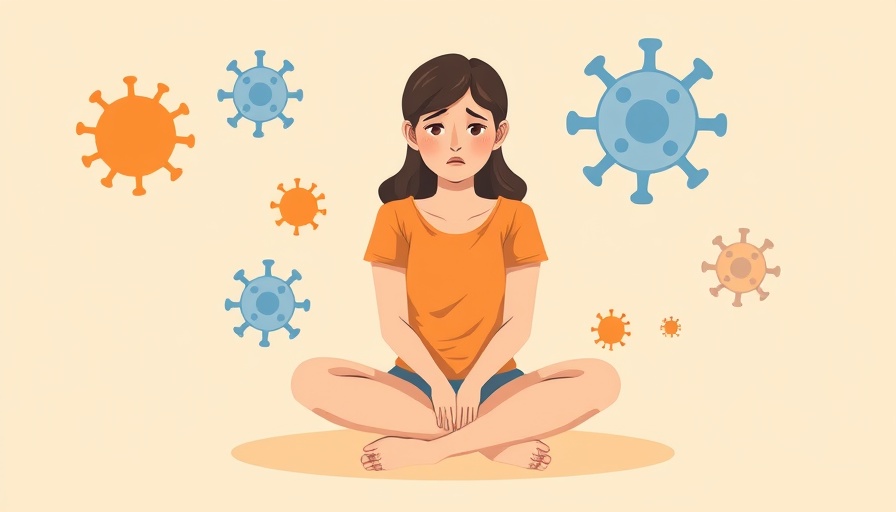
The Hidden Benefits of Anti-Aging Stretches
As we age, the concept of staying limber and retaining our youthful vigor becomes vital. While most of us associate anti-aging with skincare routines or surgical options, recent studies have revealed that simple stretches can significantly enhance our well-being and longevity. Scientific evidence supports the idea that incorporating anti-aging stretches can reduce joint stiffness, improve circulation, and promote mental clarity. This article explores the scientifically proven stretches that offer both physical and mental benefits, especially beneficial for busy parents looking to maintain a balanced lifestyle.
Why Parents Need Anti-Aging Stretches
For parents juggling the responsibilities of daily life—balancing work with family duties—self-care often falls to the wayside. Engaging in anti-aging stretches provides a dual benefit: relaxation and rejuvenation. Not only do these stretches help alleviate physical tension from daily activities, but they also serve as a form of mindfulness, allowing parents to take a moment for themselves amidst their busy schedules. Emphasizing gentle movement helps parents reconnect with their bodies, ease stress, and cultivate a holistic approach to health.
How Stretching Enhances Mental Health and Well-Being
Stretching isn’t just about maintaining flexibility; it plays a crucial role in mental health as well. According to a study published in the Journal of Health Psychology, stretching has been linked to reduced levels of stress and anxiety. For parents particularly susceptible to high stress due to juggling multiple roles, incorporating stretches can serve as a natural remedy. The physical act of stretching encourages the release of endorphins, contributing to a more positive mindset. By tapping into these mental health benefits, parents can establish routines that promote emotional balance and resilience.
Five Scientifically Proven Anti-Aging Stretches You Can Start Today
Adopting a stretching routine doesn’t require significant time or space, making it perfect for busy schedules. Here are five stretches supported by scientific research that can combat the physical aspects of aging:
- Cat-Cow Stretch: This stretch improves spinal flexibility and helps relieve tension in the neck and back.
- Hamstring Stretch: Essential for preventing lower body injuries, this stretch helps maintain mobility and ease discomfort.
- Chest Opener: Ideal for countering hunching, this stretch promotes better posture and heart health.
- Child’s Pose: This gentle stretch relaxes the body and calms the mind, perfect for busy parents needing a quick reset.
- Seated Forward Bend: This move supports digestive health and provides a great stretch for the entire back side of the body.
Practical Insights for Integrating Stretching into Your Daily Routine
Integrating stretching into your daily routine doesn’t have to be a chore. Try setting reminders on your phone, accompanying stretches with deep breathing exercises, or incorporating them into family time. Doing these stretches with children not only encourages healthy habits but also reinforces bonding moments. By framing stretches as a fun activity rather than a task, you promote physical activity and collective wellness in your family.
Long-Term Benefits: Investing in Your Longevity
Deriving lasting advantages from simple practices today can significantly alter your health trajectory tomorrow. Evidence suggests that regular stretching can prevent age-related injuries, maintain joint health, and enhance overall quality of life. Experts recommend setting aside just 10 minutes each day for these anti-aging stretches, promoting a lifetime of adaptability, strength, and wellness.
Emotional Well-Being: The Human Connection to Anti-Aging
For many, the concept of aging can provoke emotional responses ranging from fear to acceptance. Understanding the physical benefits of anti-aging routines can empower individuals to confront these feelings constructively. Establishing a consistent stretching program not only rejuvenates physical health but also nurtures emotional resilience. Embracing this holistic routine fosters a community of support among parents and instills confidence in navigating the challenges of aging gracefully.
In conclusion, anti-aging stretches serve as a natural, effective way to enhance both physical and mental well-being. By integrating simple stretches into a daily routine, especially for parents facing unique stressors, transformative results are within reach. Consider starting today—reinvigorate your body, calm your mind, and embrace the longevity that comes with self-care.
 Add Row
Add Row  Add
Add 




Write A Comment